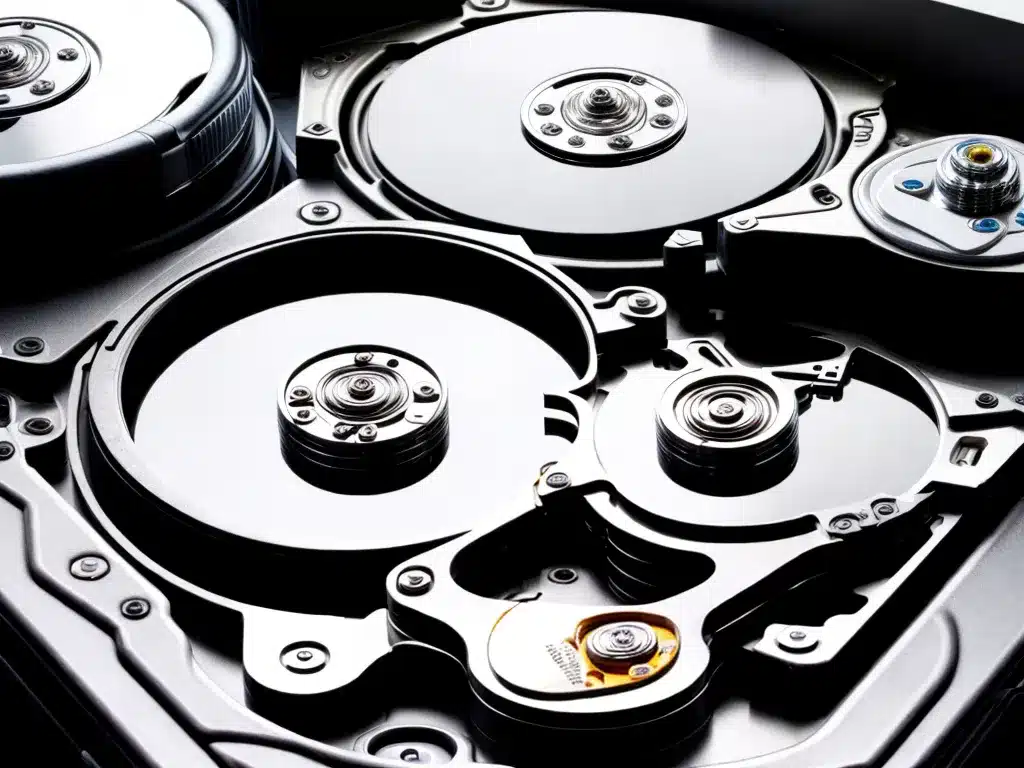
Strange Noises
One of the most common signs of a failing hard drive is strange noises coming from your computer. Clicking, beeping, grinding, and whirring sounds when your computer is starting up or while it’s running can indicate mechanical issues with the hard drive.
These noises occur when the read/write heads are unable to move properly across the drive platters to access data. The clicking noise is caused by the heads repeatedly attempting to realign themselves. Beeping and grinding noises can indicate the motor is struggling to spin the platters. Basically, any new or unusual sound coming from your hard drive is not a good sign.
Long Loading Times
As a hard drive begins to fail, you may notice significantly longer load times for programs and files. This is because the read/write heads are having difficulty locating data on the platters due to degradation or physical damage.
Your operating system has to wait while the drive tries again and again to read the data it needs to load a program or file. You may even experience freezes for several seconds or minutes as the hard drive works excessively to access data. Over time, you’ll see loading speeds get progressively worse as the drive deteriorates.
Frequent Crashes and Freezes
General system instability like computer freezes, crashes, and operating system errors can occur when a hard drive starts malfunctioning. The operating system may have trouble booting or staying stable because it can’t reliably access files and data from the failing drive.
When the hard drive has problems reading data, it can cause hangs, freezes, and crashes. You may experience a temporary freeze every time you try to open a program, access a file, or boot your system. Or you could encounter random crashes and errors like “disk read error” pop-ups. This occurs because the failing drive returns corrupted data to the OS that it can’t understand.
Bad Sectors and Data Corruption
As hard drives begin to fail, you may notice corrupted files, missing data, or drives reporting “bad sectors”. This is because read/write errors on a failing drive can permanently damage sections of the platters.
When the hard drive attempts to store or retrieve data from these bad sectors, it can lead to data loss. You may find files missing chunks of data or not opening properly. Or you may find photos, videos, and documents corrupted. Your hard drive may even report SMART errors about having bad sectors during its self-diagnostic tests.
Failing Drive Detection Tests
Many hard drives have built-in S.M.A.R.T. (Self-Monitoring Analysis and Reporting Technology) capabilities to detect problems before failure. S.M.A.R.T. lets your hard drive run diagnostics tests on things like read/write errors, bad sectors, temperature, and mechanical performance.
If you’re seeing signs of a potential drive failure, running S.M.A.R.T. tests can help confirm if your drive is healthy. Tools like Speccy or CrystalDiskInfo can check S.M.A.R.T. attributes and report errors or counts out of threshhold. Catching issues early allows you to back up your data and replace the drive before you experience a full failure.
Slow Drive Performance
As hard drives start deteriorating, you’ll notice dramatically slower performance when reading and writing data. Basic tasks like launching apps, opening files, transferring data, and boot ups will take much longer.
This occurs because damaged components like read/write heads, motors, and platters make it difficult for the drive to access data. The hard drive has to work much harder to complete read and write operations. You’ll experience frequent lags and hangs because the drive is getting overworked.
Warm or Hot Drive Temperature
Hard drives are designed to run at reasonable temperatures, usually around 25-45°C. If your hard drive is consistently running warmer than normal, it could indicate impending trouble.
Excessive heat can wear out components like motor bearings and lubricants. High temperatures often mean the motor is overworking to compensate for other failing parts. The warmth accelerates the breakdown of mechanical and magnetic components.
Monitor your hard drive temperature with tools like Speccy and CrystalDiskInfo. If it runs warmer than manufacturer guidelines, backup your data and consider replacing the drive.
How to Prepare for Hard Drive Failure
-
Back up important data – Regularly back up your files, photos, video, etc in case your hard drive completely fails. Consider both local and cloud backups.
-
Monitor drive health – Use S.M.A.R.T. tools to monitor drive health and catch problems early. Watch for warning signs like bad sectors.
-
Check drive temperature – Use utilities to monitor your hard drive temperature and ensure it’s not running too warm.
-
Consider upgrading – If your drive is older than 3-5 years, consider proactively upgrading to a new drive before failure occurs.
-
Prepare for emergencies – Have an emergency plan to recover or replace the hard drive in case it suddenly fails. Keep spare drives and recovery tools on hand.
When to Replace a Failing Hard Drive
If you notice multiple signs your hard drive is failing, it’s time to replace it. Waiting until complete failure occurs puts your data at risk. Some signs a replacement is needed:
- Frequent bad sectors, data corruption, and SMART errors
- Loud clicking or grinding noises from the drive
- Extremely slow drive performance and loading times
- Frequent crashes, freezes, and file access errors
- Drive is reporting high temperature outside normal range
Don’t take chances with a deteriorating hard drive once you see these warning signs. Backup your data and replace the drive to avoid losing important files and system stability. Catching it early allows smooth data migration versus emergency recovery.












